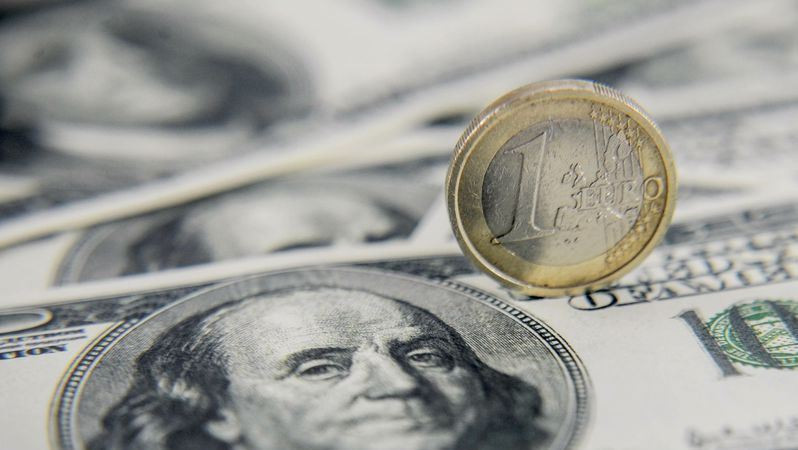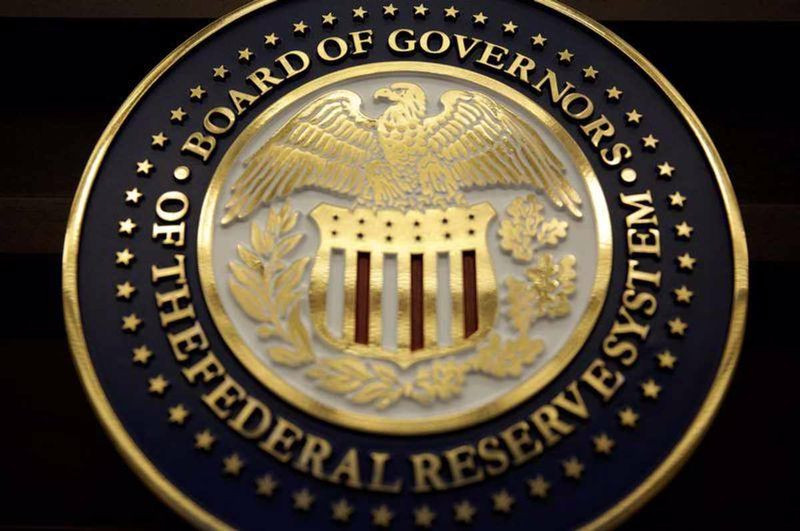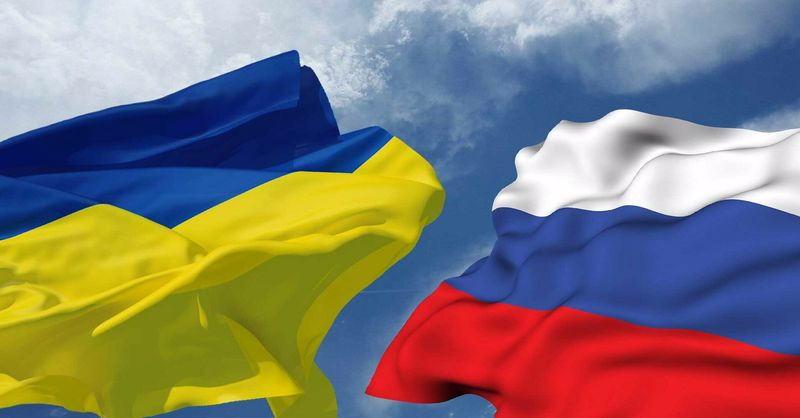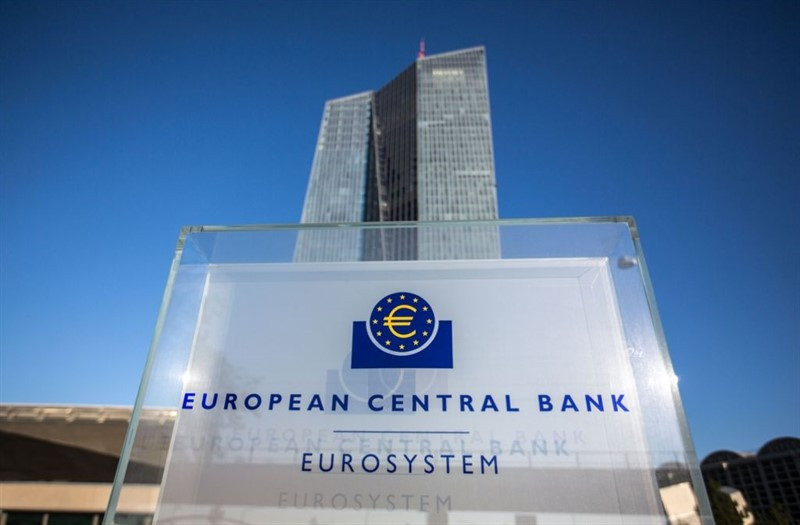
The alarming news that came today from the geopolitical front made it possible for the greenback to break out of the range in which it had been stalling until recently, while the euro was under strong bearish pressure and suffered heavy losses.
At the beginning of the week, the EUR/USD pair was close to 1.1400, and now it risks testing this year's lows around 1.1120 again.
And this is not surprising, given that the announcement of Russian President Vladimir Putin about the start of a military special operation in the Donbas caused widespread and aggressive risk avoidance.
Although Washington has long warned about a possible invasion of Russian troops in a neighboring state, the markets reacted quite painfully to the escalation of tensions in eastern Europe.
Investors rushed into safe assets, which include the US currency, and global stock indexes fell one after another.
The fall in stocks began with a 2.6% decline in Pan-Asian indices. Then European indices took over the baton. The German DAX sank by more than 4%, taking the brunt of the sell-off due to Germany's heavy dependence on energy supplies from Russia. The rise in oil prices helped limit the losses of the British FTSE 100 index with a large volume of commodities, although it still fell by more than 3%. The key Wall Street indices opened with a drop of 2.5-3%.
"The markets are now more adequately assessing the risk that something terrible will happen. This, combined with uncertainty, creates a terrible environment. No one wants to be at risk when it's in the air," ING analysts noted.
Enjoying demand as a safe haven asset, the greenback is trading at its highest level in almost a month, staying above 97.00 and continuing to gain strength amid increasing panic.
"The US currency is finally demonstrating its qualities of a protective haven as the geopolitical risks around Ukraine reach their apogee. The size and scale of military operations is a widely open question, but it is safe to assume that the markets will react to this news for some time," said Westpac strategists, who predict that the USD index will break above recent highs of 97.44.

In addition to the safe haven status, the dollar is supported by expectations that the Federal Reserve will launch a campaign to raise rates next month.
While expectations of an aggressive 50 basis point rate hike by the central bank weakened at the March meeting, federal funds rate futures continue to point to at least six rate hikes this year.
"Geopolitical events tend to increase volatility. They are usually noisy. However, these are not real signals. The real signal for the stock market is what the Fed is doing and what will happen to interest rates," Baird analysts believe.
Inflation raging on both sides of the Atlantic forced investors to face the prospect of an inevitable tightening of policy by the Fed and the European Central Bank. Now the main question is whether the escalated conflict between Russia and Ukraine will give the leading central banks a reason to postpone these steps or they may be pushed to action by further increase in energy prices.
It is already clear to everyone that the current inflation in the United States is far from a temporary phenomenon. The US central bank says that it has tools that, if necessary, can be used to combat inflation, but it is in no hurry to do this for reasons known only to FOMC members.
The central bank of the eurozone is also slow to raise rates, however, providing holders of US dollars with a convenient difference in interest rates.
"We believe that the ECB's slow rate in the direction of monetary policy normalization makes the euro vulnerable to weakening in the medium term and we continue to focus on the fact that by the end of the year the euro against the US dollar will be $1.10," Scotiabank analysts said.
ING strategists are also waiting for the greenback to grow against the single European currency, despite the fact that the prospects for tightening the Fed's policy may be revised down.
America's trade and energy ties with Russia are insignificant compared to Europe. And dollar liquidity is in demand in very uncertain times like these, they note.

Since there is still a lot of uncertainty around the Russian-Ukrainian conflict, the EUR/USD pair risks falling to January lows of 1.1120, according to ING.
"Up to now, EUR/USD has continued to receive tangible support throughout the development of the Russian-Ukrainian crisis, but given the current uncertainty, we still believe that the risks are shifting downward, or even retesting this year's lows around 1.1120," the bank's specialists said.
Traders are watching for possible hints from the ECB regarding the prospects for a change in the monetary policy of the bloc against the background of the continued growth of inflationary pressure in the eurozone.
In January, consumer prices in the eurozone increased by 5.1% compared to the same month last year, according to the final data of Eurostat, published the day before. The value of the indicator has become the highest in the entire history of the introduction of calculations.
At the same time, bets are growing that the ECB will take a more cautious position due to the risks emanating from the development of the situation around Ukraine.
The money market still expects the rate to rise by 10 basis points at the July ECB meeting, but forecasts for a rise of another 50 basis points at the end of this year have begun to weaken.
Mizuho Bank analysts believe that it is now profitable to sell the euro against the dollar. At the same time, they assume that the ECB will be forced to abandon its hawkish approach to raising rates.
Credit Agricole strategists also prefer the greenback as a safe haven asset amid escalating tensions in Ukraine, believing that Brussels sanctions against Russian gas will harm the European economy.
"The complex impact of geopolitical tensions on rates is that the introduction of sanctions and restrictions on the use of Russian gas and resources is likely to support the recent increase in inflationary pressure in the eurozone," Westpac analysts said.
"This week there was additional evidence of divergence of views within the ECB. The head of the National Bank of Austria, Robert Holzmann, said that the degree of inflationary pressure could cause two rate hikes by the end of 2022, while the head of the Bank of France, Francois Villeroy de Galo, continues to point to the flexible and gradual nature of ECB policy. The prospects for a more visible policy change may be overshadowed by events in Ukraine, but they will still be crucial for the direction of the euro in mid-2022. Today's attack by Russia led to a net breakout of the EUR/USD level of 1.1300, pulling the range from 1.1300-1.1600 to 1.1100-1.1400 on the eve of the ECB meeting on March 10," they added.

It is too early to assess the impact that the Russian-Ukrainian conflict will have on the European economy, ECB Governing Council member Gabriel Makhlouf said on Thursday.
"It is quite possible that in March we will be able to make a decision on what will happen next with the asset purchase program. I personally don't feel like I can tell you what will happen to interest rates and when. I'd rather have a little more options open to me," he said.
It is obvious that at such high turnovers, sales in global markets cannot last long – the initial panic will subside, and with it the demand for safe havens will be blunted.
As soon as there are signs that the acute phase has passed, the recovery process can begin. Improving market sentiment will help the single currency gain strength.
"History shows that the effect of military attacks like today's and geopolitical events eventually ends if there is no major global impact on the economy. In this case, the markets will recover after the initial sharp collapse," OCBC strategists noted.
So far, the general flight from risks does not allow the euro to stabilize and plays into the hands of the protective dollar.
The greenback also benefits from positive statistics on the United States.
Thus, the US Ministry of Commerce improved the estimate of national GDP growth in the fourth quarter to 7% from 6.9% in terms of the year.
A separate report showed that the number of initial applications for unemployment benefits in the United States for the week ending February 19 decreased by 17,000 and amounted to 232,000. Analysts expected the indicator to decrease to 235,000.
Starting from the level of 1.1305, the EUR/USD pair has already sunk by more than 170 points on Thursday. The relative strength index (RSI) remains below 30, hinting that the pair is oversold. However, investors ignore technical signals amid the ongoing flight from risks.
The initial support is located around 1.1120, and then at 1.1070 and 1.1030.
On the other hand, the nearest resistance is at 1.1210, followed by 1.1260 and 1.1300.





















